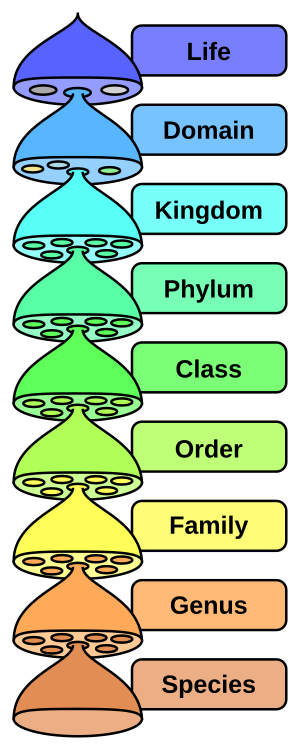Taxonomy

Taxonomy is the classification of organisms in an ordered system that indicates natural relationships. It is a subdiscipline of Systematics which is the study of those relationships. The word taxonomy is also used in non-biological contexts in to describe any system of classification. Nomenclature is the study of names of organisms (not the organisms themselves) and is a subdiscipline of taxonomy. Often you'll see a reference to "taxonomy and nomenclature" or "systematics and taxonomy".
The nomenclature of biological taxonomy is based on Latin, though since the beginning, errors and inconsistencies have crept in, so it is not completely compliant with the grammar or usage of Latin.
Carl Linne (1707-1778), who wrote as Carolus Linnaeus, was a Swedish botanist who developed the taxonomic system, called binomial nomenclature, that is used throughout Biology. His original system was first published in 1735 under the title Systema Naturae. The system has evolved over time, but remains essentially the same.
At the top, the Linnaean system designates six Kingdoms: Plantae (plants), Animalia (animals), Fungi (mushrooms and other fungi), Chromista (brown algae and others), and Bacteria (prokaryotes). The arrangement, naming and scope of each of those Kingdoms (or any grouping within them) can vary depending on the person studying and reviewing the taxonomy, especially with regards to ongoing research in the many fields of study. However, those groups are generally recognized even by those in disagreement with them.
Definitions
- Kingdom The highest formal taxonomic classification into which organisms are grouped.
- Phylum A primary division of the kingdom ranking above a class. Botanists use the term Division.
- Class A primary taxonomic category of organisms ranking below a phylum and ranking above an order.
- Order A primary taxonomic category of organisms ranking below a class and above a family.
- Family A primary taxonomic category of organisms ranking below an order and above a genus.
- Genus A primary taxonomic category of organisms ranking below a family and above a species. It is comprised of species displaying similar characteristics. In taxonomic nomenclature, the genus is used, either alone or followed by a Latin adjective or epithet, to form the species name.
- Specific epithet The term for the uncapitalized second word used in binomial nomenclature to designate a species. In the species name Anolis carolinensis the specific epithet is the word carolinensis.
- Species A primary taxonomic category of organisms, ranking below a genus and comprised of related organisms capable of interbreeding. In writing, organisms in this category are represented in binomial nomenclature by an uncapitalized Latin adjective or noun following a capitalized genus name, as seen in Anolis carolinensis. The genus is often shorthanded, as found in A. carolinensis.
- Trinomial nomenclature A three-part taxonomic designation indicating genus, species, and subspecies, such as Anolis sagrei sagrei.
- Taxon (pl. Taxa) any grouping within the taxonomic system. Plantae is a taxon, and Anolis and Homo sapiens taken together are taxa.
Within each rank (kingdom, genus, etc.) other ranks may be recognized. The primary lesser ranks used include groups using prefixes such as "sub", "super" and "infra", such as suborder and superfamily. These are useful in grouping taxa below or above a certain major rank without changing their more formal (and usually more familiar) taxonomy. In addition to those prefixes, Tribe is another commonly used grouping above the genus level. Usually understanding the meaning of a taxonomic grouping is apparent from its use.
